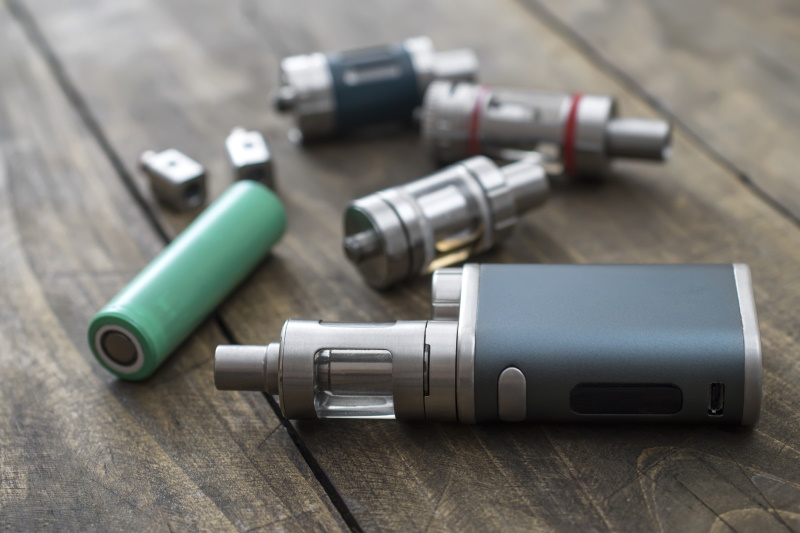Science
Study Reveals Design Flaws in Vaping Devices Fueling Youth Use

A recent study by Dr. Robin Quigg from the University of Otago has highlighted the role of vaping device design in facilitating the normalization of vaping among young Māori in Aotearoa, New Zealand. The research examined vaping use within seven collective groups, or whakarōpū, through a kaupapa Māori framework, revealing alarming trends in how and where young people use these devices.
Dr. Quigg’s findings indicate that a significant number of participants, aged between 18 and 26, had never smoked traditional cigarettes but were current or former users of vaping products. Over half of these individuals reported that the discreet nature of vaping devices encourages continued use and potential nicotine addiction. “It was normalized to vape anywhere,” Dr. Quigg noted, particularly highlighting public spaces such as libraries and lecture theatres as common venues for vaping.
The study also uncovered instances of vaping occurring in sacred locations, including urupā (cemeteries) and marae (meeting grounds). One participant remarked, “I see people walking around the whole marae complex and vape, even on the ātea.” This behavior raises concerns about adherence to tikanga, the Māori customs and traditions that govern conduct in these important cultural spaces. While many marae have designated vaping areas, some maintain a strict ‘auahi kore’ or smoke-free policy.
Dr. Quigg’s research suggests that current regulations struggle to keep pace with the evolving landscape of nicotine products in New Zealand. She calls for urgent regulatory action to address the design of vaping devices. “There is a need for tighter regulations regarding vaping devices,” she stated. “Current policy struggles to keep pace with the evolving nature of nicotine products in Aotearoa, New Zealand.”
To mitigate the issue, Dr. Quigg advocates for measures such as mandating larger device sizes and developing designs that prioritize therapeutic benefits over lifestyle appeal. She also suggests introducing flavours that emit less appealing odours to reduce the allure of vaping. Such changes would help diminish the concealability of vaping devices, reinforcing the integrity of places designated as smoke-free, including libraries, lecture theatres, bars, and outdoor areas like urupā and playgrounds.
While Dr. Quigg emphasizes the need for stricter regulations on vaping device design, she cautions that these measures alone will not adequately protect young people from the risks associated with vaping. “Stronger measures must be implemented to reduce the appeal of vaping,” she concluded, underscoring the importance of a comprehensive approach to tackle this growing public health concern.
-

 World4 months ago
World4 months agoTest Your Knowledge: Take the Herald’s Afternoon Quiz Today
-

 Sports4 months ago
Sports4 months agoPM Faces Backlash from Fans During Netball Trophy Ceremony
-

 Lifestyle4 months ago
Lifestyle4 months agoDunedin Designers Win Top Award at Hokonui Fashion Event
-

 Entertainment4 months ago
Entertainment4 months agoExperience the Excitement of ‘Chief of War’ in Oʻahu
-

 Sports4 months ago
Sports4 months agoLiam Lawson Launches New Era for Racing Bulls with Strong Start
-

 World5 months ago
World5 months agoCoalition Forms to Preserve Māori Wards in Hawke’s Bay
-

 Health4 months ago
Health4 months agoWalking Faster Offers Major Health Benefits for Older Adults
-

 Lifestyle4 months ago
Lifestyle4 months agoDisney Fan Reveals Dress Code Tips for Park Visitors
-

 Politics4 months ago
Politics4 months agoScots Rally with Humor and Music to Protest Trump’s Visit
-

 Top Stories5 months ago
Top Stories5 months agoUK and India Finalize Trade Deal to Boost Economic Ties
-

 Health2 months ago
Health2 months agoRadio Host Jay-Jay Feeney’s Partner Secures Visa to Stay in NZ
-

 World5 months ago
World5 months agoHuntly Begins Water Pipe Flushing to Resolve Brown Water Issue









